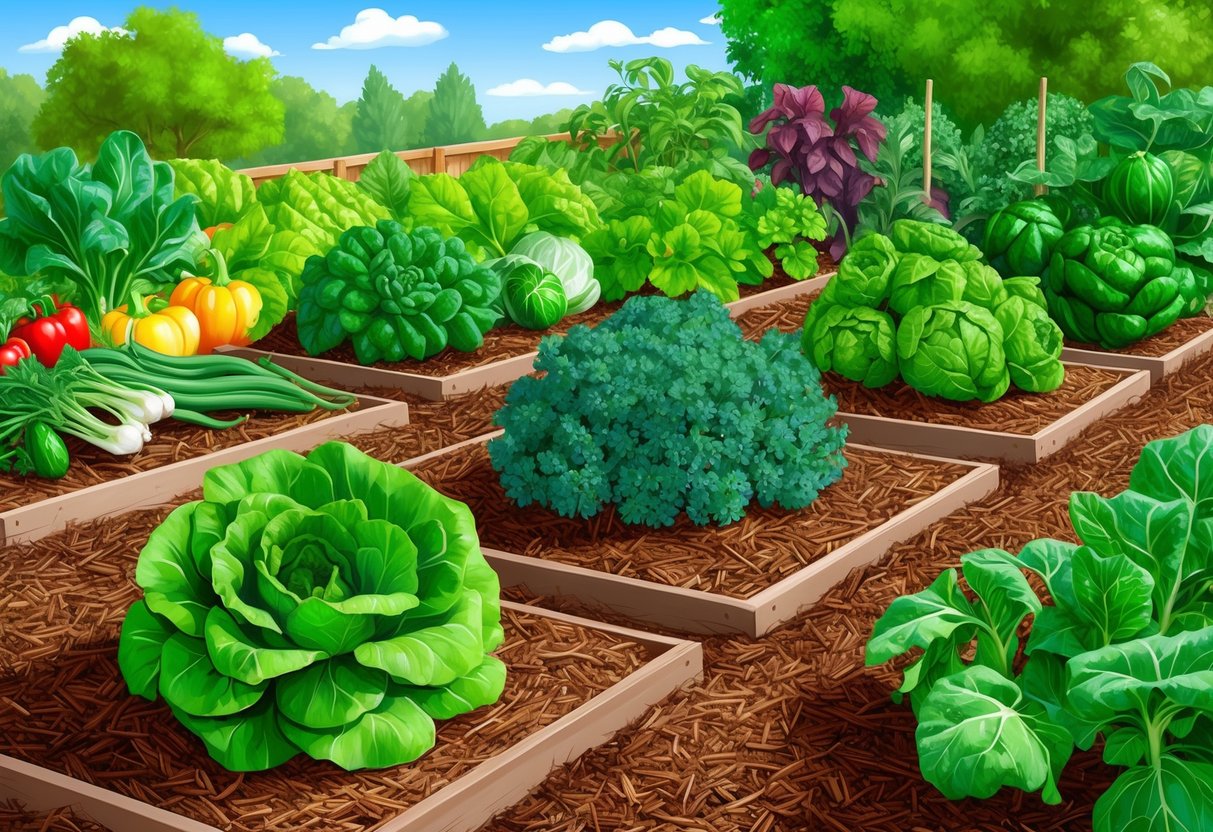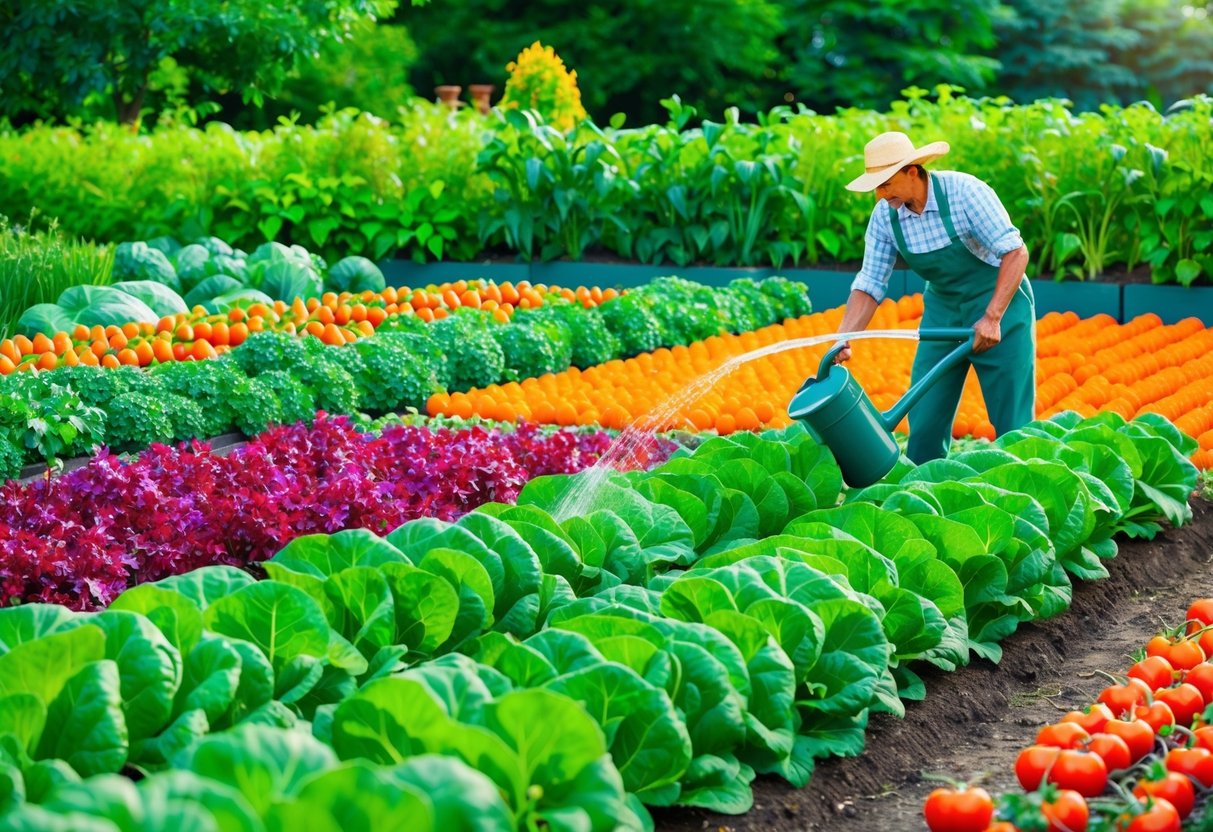
Organic Fertilizers and Natural Plant Food
Organic fertilizers and natural plant food help vegetable gardens produce healthier, more robust crops. These options support soil health, reduce chemical exposure, and create nutrient-rich growing environments for vegetables.
Benefits of Organic Fertilizer
Organic fertilizers supply essential nutrients that vegetables need to thrive. They release nutrients slowly, promoting steady plant growth and reducing the risk of burning roots.
Unlike synthetic alternatives, organic plant food also builds soil structure and improves moisture retention. Using ingredients such as compost, manure, or natural amendments keeps the soil ecosystem alive.
Beneficial microbes in organic fertilizer break down nutrients, making them more available to plants. Homemade blends are easy to create using kitchen scraps, eggshells, banana peels, or coffee grounds.
A wide variety of homemade organic fertilizers can be made at home using everyday items, supporting both sustainability and garden health. These natural sources minimize waste and encourage sustainable growing practices.
Compost and Composting Methods
Composting transforms food scraps, yard clippings, and organic waste into nutrient-rich plant food. Classic backyard composting involves piling green (nitrogen-rich) materials like vegetable peels and grass clippings with brown (carbon-rich) materials such as dried leaves.
The balanced mix decomposes over time, creating dark, crumbly compost for use in garden beds. Options like vermicomposting use worms to speed up decomposition and produce worm castings, a potent form of natural fertilizer.
Small spaces can benefit from compost bins or even countertop composters, making the process accessible for urban gardeners. Composting methods repurpose waste and return valuable nutrients to the soil, supporting a closed-loop system.
Turning and aerating the pile regularly helps to accelerate decomposition. Finished compost can be worked directly into the soil or used as a top dressing to feed plants throughout the season.
Mulching for Moisture and Weed Control

Mulching blocks sunlight, helping reduce weed growth in organic gardens. It also holds water at the soil surface and insulates plant roots, creating a stable environment for vegetable crops.
Choosing the Right Mulch
Selecting the best mulch for an organic garden depends on the types of vegetables and local climate conditions. Organic options like wheat straw, pine straw, wood chips, and grass clippings all provide effective weed control by blocking sunlight and physically smothering weed seeds.
For heavier weed pressure, a deeper layer—such as wood chips up to eight inches—offers stronger suppression and improved moisture retention, particularly in perennial beds or around fruit bushes. Gardeners should avoid mulches that could introduce pests or weed seeds, such as poorly aged hay.
A table can help compare common organic mulches:
| Mulch Type | Weed Control | Moisture Retention | Breakdown Speed |
|---|---|---|---|
| Wood chips | Excellent | High | Slow |
| Wheat straw | Good | Moderate | Fast |
| Pine straw | Moderate | Moderate | Moderate |
| Grass clippings | Good | High | Fast |
Newspaper can also be used, usually under another mulch, to strengthen weed suppression. For more detail on mulch types, see options for weed control in the home vegetable garden.
How Mulch Supports Healthy Soil
Mulch contributes to improved soil health by adding organic matter as it breaks down. As mulch decomposes, earthworms and soil microbes use it as food, leading to better soil structure and fertility.
This process boosts organic matter content, improving nutrient availability and water-holding capacity. Mulch moderates soil temperatures, protecting roots from temperature swings and reducing evaporation.
By keeping the soil surface cool and moist, mulch creates better conditions for beneficial organisms and plant roots. It is especially important during hot summers and in raised beds, where soil dries quickly.
A thick layer of mulch, such as wood chips or straw, helps stabilize soil moisture. Proper mulching supports healthy plant growth while reducing the need for frequent irrigation.
To learn more about specific benefits, read about organic garden mulches for moisture and weed control.
Watering and Maintenance Practices

Proper watering and regular maintenance are critical for keeping a home vegetable garden healthy. Using the right techniques not only conserves water but also helps plants thrive, leading to better harvests and fewer problems with pests or disease.
Efficient Irrigation Techniques
An effective irrigation system in a vegetable garden ensures consistent soil moisture while reducing water wastage. Drip irrigation and soaker hoses deliver water directly to the root zone of plants, minimizing evaporation and keeping foliage dry, which lowers the risk of fungal diseases.
Mulching is another useful practice that helps regulate soil temperature, retains moisture, and suppresses weed growth. Gardeners should check the moisture level by sticking a finger into the soil—a method useful for determining when watering is necessary.
Watering at the base of plants using a watering can or hose set to a gentle flow prevents soil erosion and limits splashing, which can spread disease. For larger gardens, automated irrigation timers can be set up to guarantee regular, deep watering.
Weekly checks for leaks, clogged emitters, and uneven moisture help maintain system efficiency. Sticking to sustainable irrigation practices preserves water resources and promotes stronger, healthier vegetable growth in organic gardens.
Best Times to Water Vegetable Gardens
Watering early in the morning is widely regarded as optimal for vegetable gardening. Cool morning temperatures reduce evaporation, allowing water to soak deeply into the soil and reach plant roots before the day’s heat increases water loss.
Evening watering is acceptable if mornings are not possible, but consistently moist leaves overnight may encourage mildew and fungus. Midday watering is not recommended since rapid evaporation can leave roots dry and waste water.
On average, established vegetables need about an inch of water per week, but sandy soils or periods of high temperature and wind may require more. Monitoring the soil with a finger test or moisture meter gives a clear indication of when to water for specific plant needs.
For further reading, see expert guidance about watering a vegetable garden the right way.